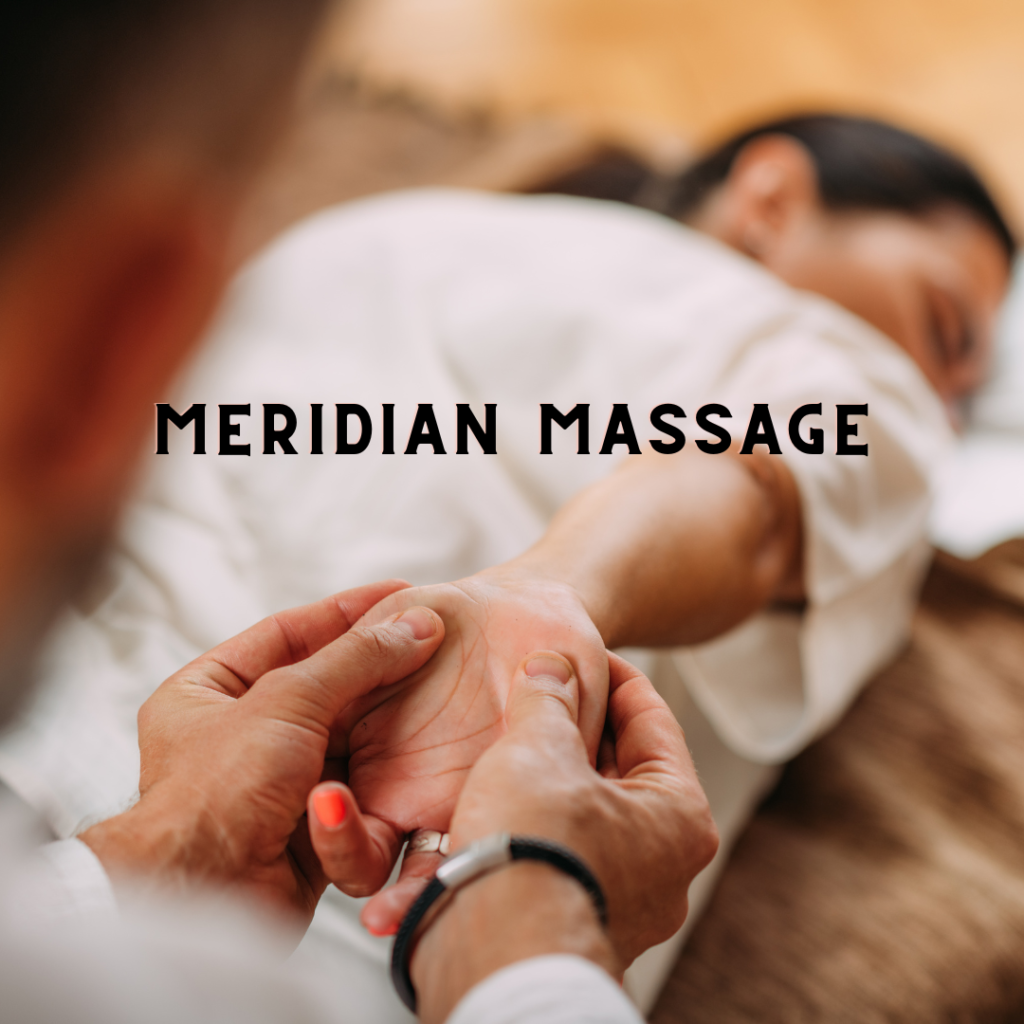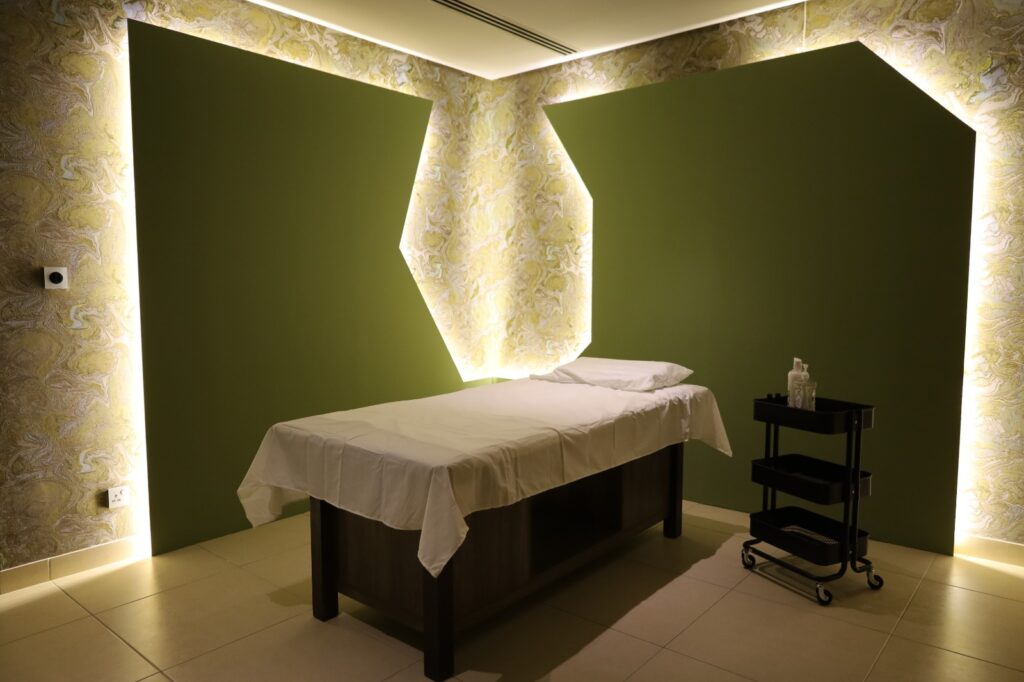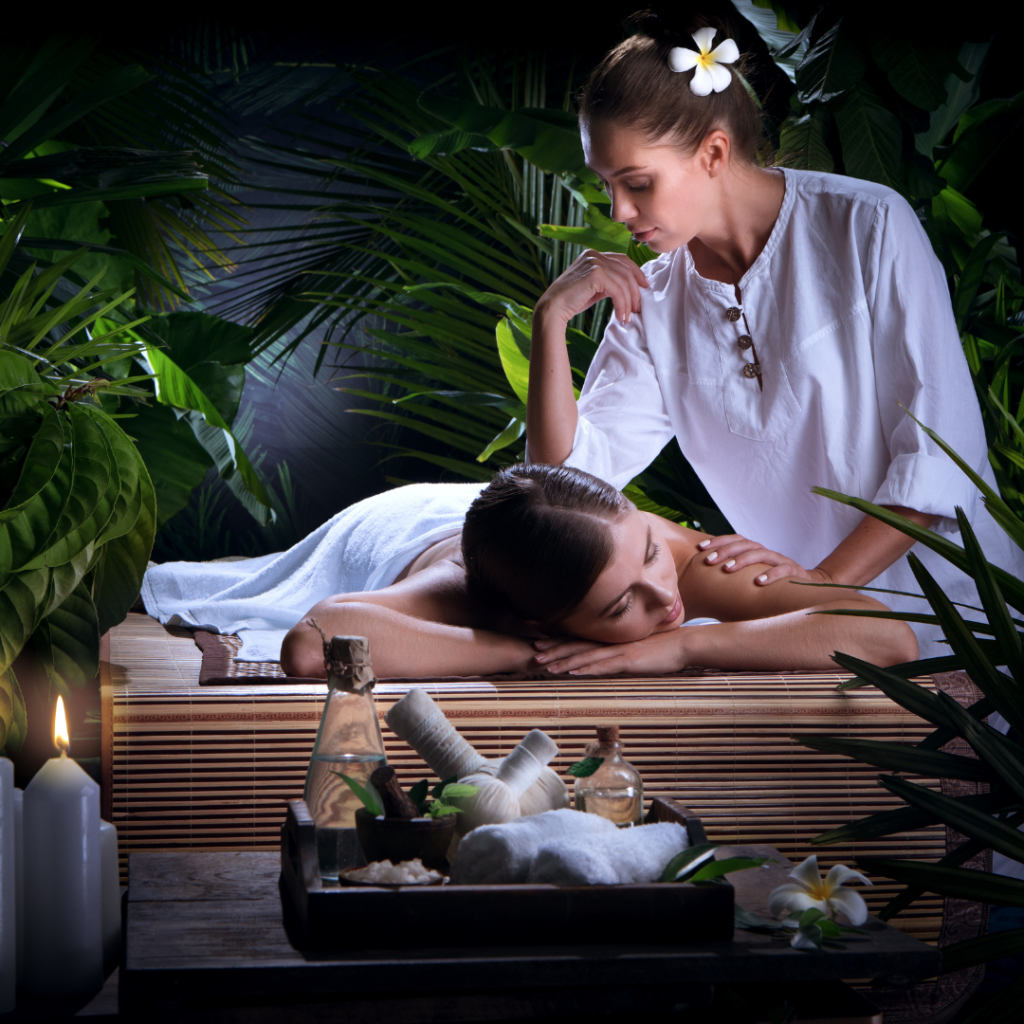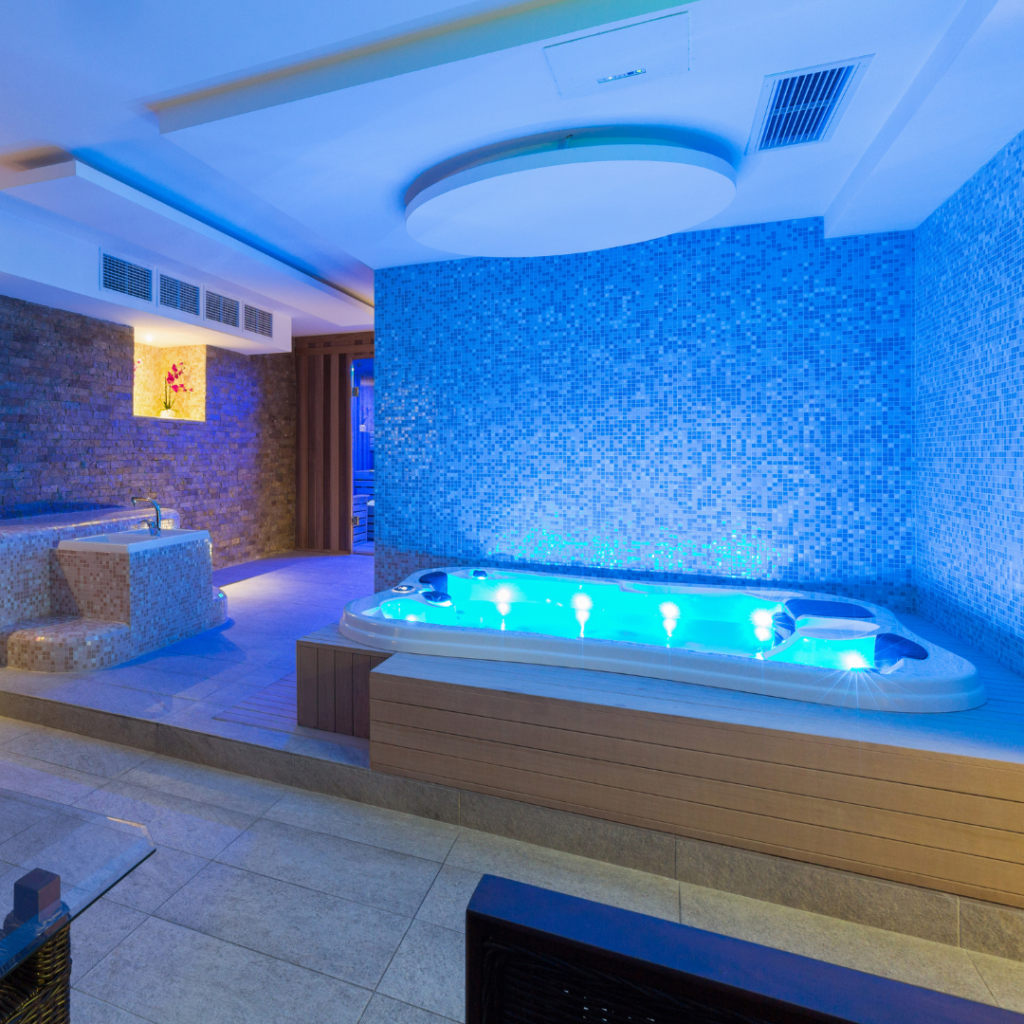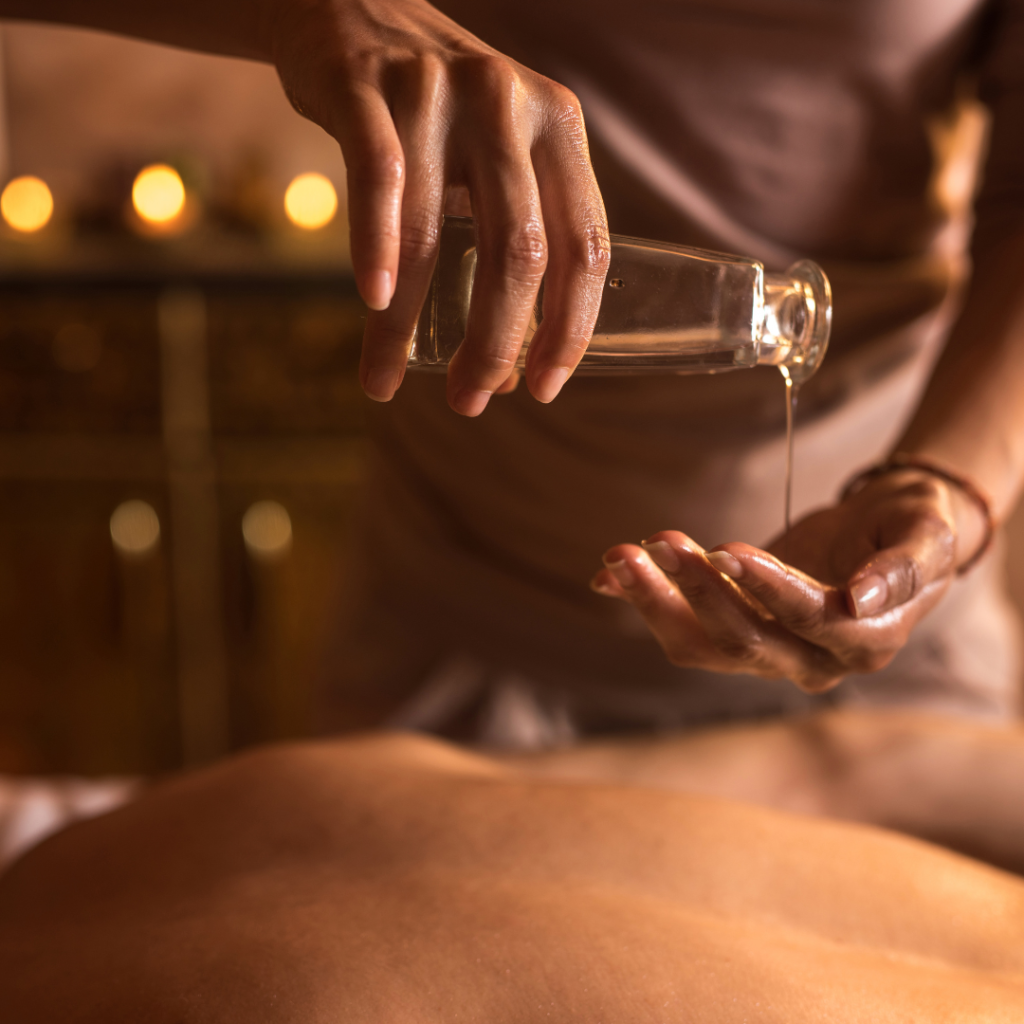Table of Contents
How to Do Aromatherapy Massage: A Relaxing and Rejuvenating Guide

The fusion of essential oils and massage therapy, known as aromatherapy massage, promises not only relaxation but also significant therapeutic benefits. This technique is used worldwide and is famed for its ability to rejuvenate the mind, body, and spirit. If you’re looking to incorporate aromatherapy massage into your self-care routine or just curious about the process, here’s a comprehensive guide to help you understand and enjoy its numerous benefits.
Understanding Aromatherapy
Embarking on the journey of aromatherapy massage requires a foundational understanding of aromatherapy itself. At its core, aromatherapy is the therapeutic use of plant-derived essential oils to promote mental, emotional, and physical well-being.
These essential oils are concentrated extracts, capturing the very essence and vitality of the plants they come from. Each oil carries a distinct profile, composed of unique compounds that determine its aroma and therapeutic benefits. When introduced into our system, either through inhalation or topical application, they interact with the body in several beneficial ways:
- Mood Regulation: Essential oils such as lavender and bergamot have shown potential in elevating mood and combating feelings of sadness or depression. Their aromas activate specific parts of the brain, evoking emotions and memories that can shift our mood.
- Stress Reduction: Oils like chamomile and frankincense are celebrated for their calming effects. They can aid in lowering cortisol levels, the primary stress hormone, promoting a sense of tranquillity.
- Therapeutic Properties: Beyond mood and stress, many essential oils offer antiseptic, anti-inflammatory, and even analgesic properties. For instance, tea tree oil is renowned for its antifungal and antibacterial capabilities, while peppermint can alleviate headaches and muscle pains.
Moreover, aromatherapy is closely intertwined with ancient traditions and cultures. Civilizations from the Egyptians to the Chinese have harnessed the power of these oils for various medicinal, spiritual, and cosmetic purposes.
Navigating the World of Essential Oils: Making the Best Selection for Aromatherapy Massage
When diving into how to do aromatherapy massage, one of the first and most crucial steps is selecting the ideal essential oil. These aromatic oils, each with its distinct therapeutic properties, play a pivotal role in the massage experience. Here’s a comprehensive look into some favored choices for those keen on learning how to do aromatherapy massage effectively:
- Lavender: A staple in many aromatherapy practices, lavender is versatile and loved for its calming properties. Its gentle scent can alleviate feelings of anxiety, setting the stage for a serene aromatherapy massage. Additionally, its anti-inflammatory attributes make it a top choice for skin-soothing massages.
- Eucalyptus: If you’re wondering how to do aromatherapy massage that refreshes and revitalizes, consider eucalyptus. Its sharp, invigorating aroma serves as a great respiratory aid, especially beneficial for those with congestion. Moreover, it can provide clarity and focus, perfect for clearing a clouded mind.
- Peppermint: For those learning how to do aromatherapy massage aimed at relaxation and rejuvenation, peppermint is a fantastic pick. Its vibrant scent not only soothes muscle aches but also invigorates the senses, offering an energizing boost.
- Chamomile: A go-to for evening massages or when tranquility is the aim, chamomile, with its subtle, apple-like notes, ensures relaxation. It aids in peaceful sleep and can calm an overactive mind, making it an essential choice for those exploring how to do aromatherapy massage that truly soothes.
Crafting the Perfect Blend: How to Do Aromatherapy Massage with the Right Oil Mixture
Mastering the art of how to do aromatherapy massage hinges not only on technique but also on the oil blend you create. The synergy between the essential oil and the carrier oil determines the efficacy and safety of the massage. Here’s a detailed guide to preparing the optimal massage oil for an unforgettable aromatherapy experience:
- Choosing Your Essential Oil: As previously discussed, the choice of essential oil sets the tone for the massage. Whether you’re aiming for relaxation with lavender or invigoration with peppermint, your selection should align with the desired outcome of the aromatherapy massage.
- Selecting a Carrier Oil: When you’re learning how to do aromatherapy massage, understanding carrier oils is crucial. These oils, which include popular options like coconut, almond, and jojoba oil, serve as the base for your massage blend. Not only do they dilute the essential oil, ensuring safe application on the skin, but they also offer their own therapeutic benefits. For instance, almond oil is rich in vitamin E and is known for its skin-softening properties, while jojoba closely resembles the skin’s natural sebum, making it an excellent moisturizer.
- The Art of Dilution: One of the critical steps in understanding how to do aromatherapy massage is mastering the dilution process. A general rule of thumb is to add 2-3 drops of essential oil per tablespoon of carrier oil. This ratio ensures that the blend is potent enough to provide the therapeutic benefits of the essential oil while being gentle on the skin.
- Storing Your Blend: Once you’ve mixed your oils, it’s best to store the blend in a dark glass bottle, away from direct sunlight. This prevents degradation and ensures the longevity and efficacy of your massage oil.
Crafting the Perfect Ambiance: How to Do Aromatherapy Massage in the Right Environment
Learning how to do aromatherapy massage extends beyond the massage techniques and oils; it encompasses the creation of an atmosphere that complements and enhances the entire experience. A well-curated environment can elevate the therapeutic benefits of the massage, ensuring a truly immersive session. Here’s a deeper dive into creating that perfect setting:
- Lighting: The power of lighting in setting the mood cannot be overstated. Dimmed lights or soft candlelight can instantly transform a room, giving it a serene and intimate feel. Opt for candles made of natural waxes like soy or beeswax, and consider those infused with calming essential oils for an added touch.
- Music: Soft, instrumental music or nature sounds can be the backdrop to your aromatherapy session. The rhythm and tone should be calming, aiding in the relaxation process. Remember, the aim is to transport the individual to a place of tranquility, and the right auditory experience can be instrumental in achieving this.
- Temperature Control: Ensuring that the room temperature is just right is pivotal when mastering how to do aromatherapy massage. A slightly warm room can aid in muscle relaxation and enhance the absorption of massage oils, while a cooler room might detract from the experience. Consider using a space heater or adjusting the thermostat to achieve the desired warmth.
- Diffusing Essential Oils: Introducing the aroma of essential oils into the room can amplify the therapeutic effects of the massage. Use a diffuser to spread the chosen essential oil aroma throughout the space. Whether you select calming lavender or invigorating eucalyptus, the diffused scent can set the tone for the massage and enhance its benefits.
- Comfortable Furnishings: Invest in a comfortable massage table or bed, ensuring it’s draped with soft linens. Plush pillows and cozy blankets can add to the comfort, allowing the individual to fully relax.
As you refine your understanding of how to do aromatherapy massage, remember that crafting the ambiance is as crucial as the massage itself. By paying attention to these details, you create an environment that beckons relaxation, ensuring that each session is a journey of rejuvenation and tranquility.
Mastering the Movements: How to Do Aromatherapy Massage with Precision and Care
Delving into the heart of how to do aromatherapy massage, the techniques employed play a pivotal role in determining the effectiveness and comfort of the session. The power of touch, combined with the therapeutic benefits of essential oils, can provide an unparalleled healing experience. Here’s a step-by-step guide on mastering the core techniques:
- Effleurage: Start with effleurage, which involves long, gliding strokes. Begin at the extremities, such as the feet or hands, and work your way towards the heart. These strokes not only promote relaxation but also boost circulation and lymphatic flow. The pressure should be light at the beginning, gradually deepening as the massage progresses.
- Petrissage: Once the body is warmed up, transition into petrissage – a kneading technique. It involves lifting and rolling the muscles between the thumb and fingers or using the palms for larger areas like the back. This method helps to release muscle tension, improve blood flow, and eliminate toxins.
- Tapotement: This rhythmic tapping technique can be invigorating and stimulating. Using the sides of the hands, fingertips, or even cupped hands, deliver light, brisk taps to the body. While it can boost circulation, ensure it remains comfortable for the recipient.
- Friction: As you delve deeper into how to do aromatherapy massage, friction techniques are crucial. Using the thumb or fingers, apply circular pressure on specific tension points. This generates heat, breaking down knots and adhesions in the muscles.
- Rhythm and Flow: Regardless of the technique employed, maintaining a consistent rhythm is paramount. The movements should flow seamlessly from one to the next, ensuring that there’s no sudden change in pressure or pace. The recipient’s comfort should always be at the forefront, adjusting techniques based on their feedback.
- Completing the Session: Conclude the massage by returning to gentle effleurage strokes, allowing the recipient to transition from the deep work back to a state of relaxation. This ensures they leave the session feeling balanced and rejuvenated.
As you continue to hone your skills in how to do aromatherapy massage, remember that the blend of techniques, combined with the therapeutic power of essential oils, offers a unique opportunity to provide both physical and emotional healing. By paying attention to detail and prioritizing the comfort of the recipient, every session can be a transformative experience.
Nurturing the Body Post-Session: How to Do Aromatherapy Massage Aftercare
The journey of understanding how to do aromatherapy massage doesn’t end when the hands stop moving. The post-massage period, often termed the ‘aftercare’, is just as significant in ensuring the therapeutic benefits are fully realized and prolonged. Here’s a guide to the essential steps to foster recuperation and relaxation post-massage:
- Hydration: The act of massaging can stimulate the circulatory and lymphatic systems, aiding in the release of toxins stored in the body. To assist in flushing out these toxins and support the body’s natural detoxification process, drinking ample water is imperative. It not only rehydrates the muscles but also aids in reducing any post-massage soreness.
- Rest and Recuperation: The deep relaxation induced by an aromatherapy massage can leave the recipient feeling slightly drowsy or ‘in a daze’. It’s advisable to take some time to rest, allowing the body to recalibrate. If possible, a short nap can help consolidate the therapeutic effects of the massage.
- Mindful Breathing: The aromatic benefits of essential oils linger even after the massage concludes. Taking deep, mindful breaths can further enhance relaxation, as it allows the individual to take in the residual scents and anchor the calming sensations experienced during the session.
- Avoid Strenuous Activities: After receiving a massage, especially a deep tissue or therapeutic one, it’s wise to steer clear of any intense physical activities for at least 24 hours. This gives the muscles and soft tissues ample time to heal and rejuvenate.
- Warm Bath: A warm bath, possibly with a few drops of the essential oil used during the massage, can further the relaxation process. The warmth of the water can soothe any residual muscle tension, and the essential oil can offer additional therapeutic benefits.
- Feedback and Reflection: Aftercare is also a time for reflection. If you’re the practitioner, encourage feedback to refine your techniques. If you’re the recipient, ponder on the experience – what you loved, what you might want differently next time, and how your body feels.
In grasping the full essence of how to do aromatherapy massage, recognizing the importance of aftercare is vital. It’s this holistic approach – from preparation to post-session care – that ensures each aromatherapy massage session is a healing and nurturing experience from start to finish.
Conclusion: The Profound Impact of Aromatherapy Massage
Understanding how to do aromatherapy massage provides a gateway to the transformative power of touch and scent. Rooted in age-old traditions, this practice offers more than fleeting relaxation; it serves as a bridge between the physical and emotional realms, fostering harmony and well-being. Each step, from selecting the perfect essential oil to ensuring post-session care, contributes to an experience that resonates deeply with the recipient.
The delicate dance of hands combined with the therapeutic potency of essential oils has cemented aromatherapy massage as more than a mere indulgence. It’s a testament to the body’s innate ability to heal, restore, and rejuvenate when nurtured with intention and care. For those keen on embracing holistic approaches to health, this massage technique stands as a beacon, illuminating the path to balance and serenity.
In a world where stress and hustle are often the norms, taking the time to understand and experience aromatherapy massage is akin to gifting oneself a sanctuary of peace. It’s an invitation to pause, breathe, and immerse in the gentle embrace of nature’s finest offerings. Whether you’re on the giving or receiving end, the experience is undeniably profound, promising a journey that touches the soul, calms the mind, and revitalizes the body.
Read More: What is Neuromuscular Massage? Tips for the perfect aromatherapy massage Moroccan Massage
How do I prepare for an aromatherapy massage?
Before an aromatherapy massage, ensure the room is warm and comfortable. Choose a relaxing essential oil blend, and dilute it properly in a carrier oil. Set up soft towels or sheets for the massage surface, and create a calming ambiance with dim lighting and soothing music.
What are the benefits of aromatherapy massage?
Aromatherapy massage can provide various benefits, including relaxation, stress relief, improved mood, and relief from muscle tension. The combination of massage techniques and aromatic essential oils promotes both physical and mental well-being.
Which essential oils are commonly used in aromatherapy massage?
Common essential oils used in aromatherapy massage include lavender for relaxation, peppermint for pain relief, eucalyptus for respiratory support, and chamomile for soothing muscles. Each oil has unique properties and benefits.
How do I perform an aromatherapy massage?
Begin by applying a small amount of diluted essential oil to your hands and warming it up. Use gentle, flowing strokes to massage the oil into the skin, focusing on areas of tension or discomfort. Adjust pressure according to the recipient’s preferences and comfort level.
Is it safe to use aromatherapy massage during pregnancy?
Aromatherapy massage can be safe during pregnancy, but it’s essential to consult with a qualified healthcare professional or aromatherapist beforehand. Some essential oils may not be suitable for use during pregnancy, so it’s crucial to choose oils that are considered safe and to ensure proper dilution.


